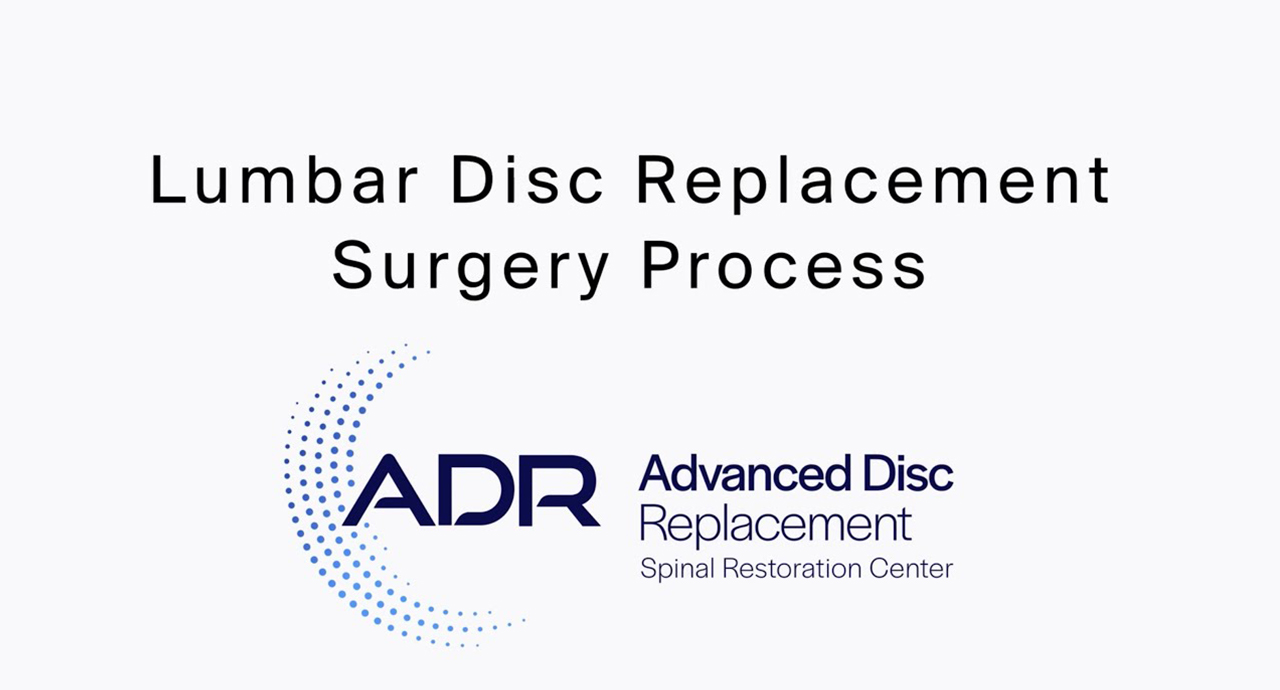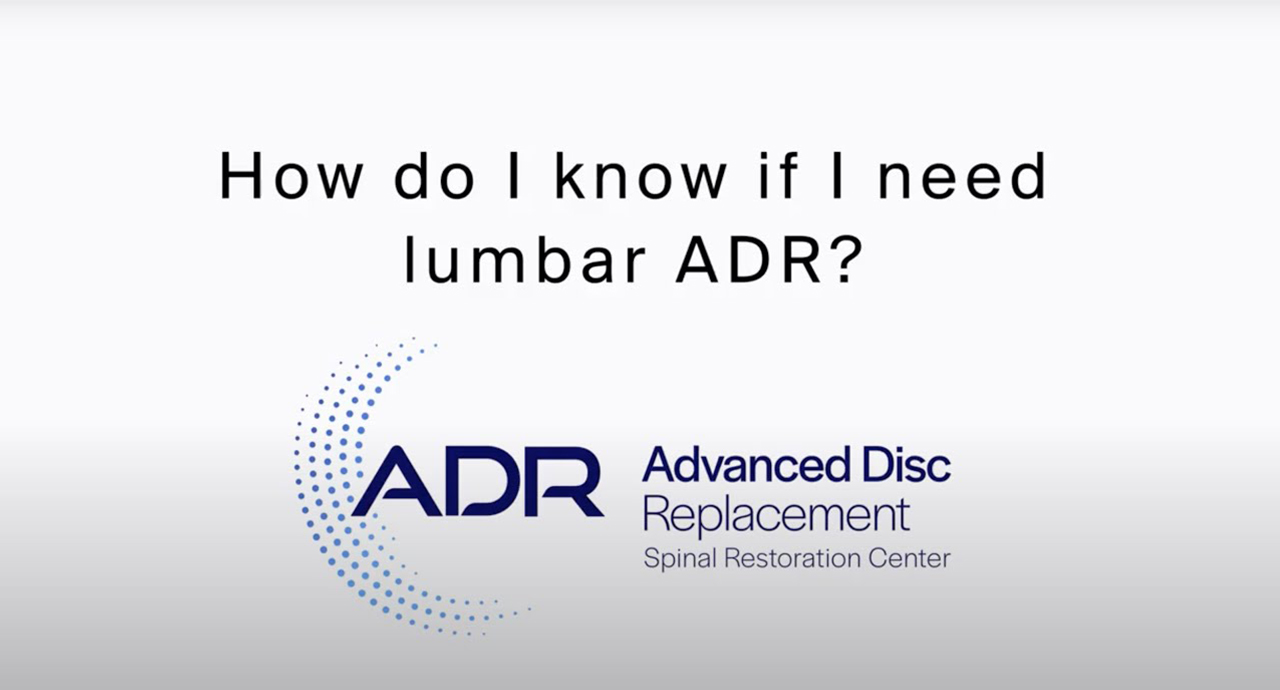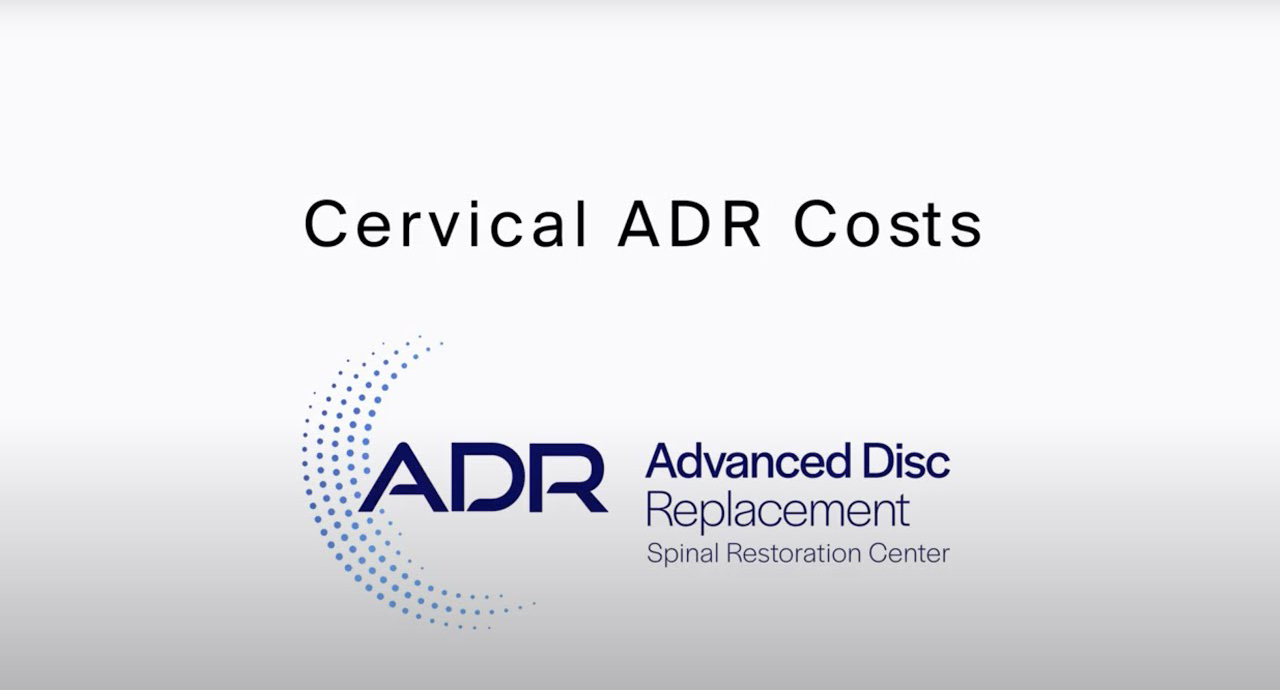

Artificial disc replacement is the removal of a patient’s natural, problematic disc and the placement of an artificial one.
Artificial disc replacement surgery involves a small incision in the neck or belly through which the spine surgeon identifies the problematic disc, carefully removes it, and places an artificial disc in the space between the two spinal bones. In our breakdown of artificial disc replacement learn everything you need to know, whether you’re considering disc replacement surgery or you are in recovery.

What is Artificial Disc Replacement?
Artificial disc replacement is a surgical procedure in which a spine surgeon removes the natural spinal disc that is causing symptoms and replaces it with an artificial disc. The artificial disc is designed to mimic the natural disc; the artificial disc supports the weight of the body but also provides neck or back flexibility and spinal motion.
Why Might I Need Artificial Disc Replacement?
If you are experiencing neck or back pain that has not gone away after a few months, you may need artificial disc replacement. If an intervertebral disc in your neck (i.e., cervical spine) or lower back (i.e., lumbar spine) is diseased or damaged and is pressing on your spinal cord, nerve roots, or nerves, this can cause pain, weakness, and/or numbness. Removing the problematic disc can relieve these symptoms. The artificial disc that is inserted in its place can restore spinal motion and flexibility.

Preparing For Artificial Disc Replacement
Preparing for artificial disc replacement is similar to preparing for any other major surgery. The healthier you can make your body before the procedure, the less likely you will encounter complications. Get a pre-op physical with routine bloodwork, electrocardiogram and, for some, a chest X-ray. Stop smoking and drinking alcohol for a few weeks prior to the procedure. You may need to temporarily stop taking some medications (e.g., blood thinners), but be sure to check with your doctor about how to handle your medications, supplements, and other remedies you may take before artificial disc replacement surgery and during recovery.
You should not eat or drink anything for at least 8 hours before surgery (usually at 11:59 pm the day before the procedure). On the day of surgery, wear loose-fitting, comfortable clothes. Make sure you have someone who can help you get home after the procedure and help you get settled at home for the recovery period to follow.
Artificial Disc Replacement Risks
Like any surgery, artificial disc replacement is associated with certain risks. Bleeding and infection are uncommon but possible after virtually every surgery. Because the procedure is performed under general anesthesia, patients may have a reaction to the anesthesia. Fortunately, this very rarely happens.
Specific yet uncommon artificial disc replacement risks include disc migration, bone fracture, and nerve injury. Artificial disc migration means that the artificial disc shifts out of its ideal position. If artificial disc migration occurs, it can be corrected with a second spinal surgery.
If a patient has unusually weak spinal bones, the bones that support the artificial disc may break. Experienced spine surgeons can almost always avoid this artificial disc replacement risk by only operating on patients who have strong bones. In other words, people with osteoporosis, cancer, or certain autoimmune or metabolic diseases are not good candidates for artificial disc replacement surgery because they are at risk for spinal bone fracture.
The spinal bones are very close to several important structures, namely the spinal cord and spinal nerves. In fact, the damaged spinal disc is likely pressing on these sensitive structures. Nerve injury may happen when the damaged disc is being removed, but experienced artificial disc replacement surgeons can usually avoid this treatment risk.


Disc Replacement vs
Spinal Fusion
If you are considering artificial disc replacement surgery, you will probably want to explore your options. Patients with chronic neck or lower back pain who need surgery have two major options: artificial disc replacement and spinal fusion. In both procedures, the spine surgeon removes the diseased or damaged disc. What comes after the natural disc is removed is the main difference between spinal fusion and artificial disc replacement. In spinal fusion, the surgeon places a bit of the patient’s bone or artificial bone-like material where the natural disc was. Over time, the two spinal bones and the material in between knit together like a healing bone, becoming fused.
In artificial disc replacement, the surgeon places an artificial device where the natural disc was. The spinal bones do not fuse together. Instead, the artificial disc allows the spinal bones to tilt and rotate a bit, much like the natural disc. An artificial disc allows the spine to twist, bend, and flex.
LEARN MOREArtificial Disc Replacement Recovery Process
While you should plan for the possibility of remaining in the hospital for the first day after surgery, most patients who have artificial disc replacement can leave the surgery center on the same day as surgery. In other words, artificial disc replacement is an outpatient procedure in most cases.
While you need a few doses of opioids (e.g., oxycodone) after artificial disc replacement surgery (no more than 3 to 7 days), most people have only moderate discomfort that is well-controlled with acetaminophen or NSAIDs like ibuprofen. Be sure to get a copy of your post-surgery instructions before you leave. These instructions are tailored to your individual needs and your specific type of surgery (e.g., cervical artificial disc replacement, lumbar artificial disc replacement).
1-2 Weeks After Artificial Disc Replacement
Plan on returning to the surgeon’s office within the first 1-2 weeks after artificial disc replacement surgery. During this appointment, a member of your surgical team will examine your wound and perform a physical examination. In some cases, you may need to have a set of X-ray images taken to check on artificial disc placement and healing. You will most likely either start or continue physical therapy during this period of recovery. Often wound evaluations are done via telemedicine.
3 Weeks to 3 Months After Surgery
By 3 weeks after artificial disc replacement surgery, you will be able to do more physical tasks like driving, lifting objects up to 25 pounds, and some forms of exercise. At some point between 3 weeks and 3 months, you will have another follow-up appointment with your surgeon. This appointment is a good time to discuss how you are healing and recovering, when you can return to work, and what activities are safe to perform. People with “physical” jobs may need to remain off work longer than those who have “desk” jobs.
Artificial Disc Replacement Long Term Recovery
By 3 months, most people have fully recovered from artificial disc replacement surgery (though some may need some additional time). Additional X-rays may be needed at the 3-month appointment to confirm proper healing. Once healed, most patients who have artificial disc replacement surgery report a marked reduction in neck/low back pain symptoms. Unlike fusion, artificial disc replacement restores and preserves spinal mobility and flexibility.


Finding an Artificial Disc Replacement Specialist
Perhaps surprisingly, not every spine surgeon performs artificial disc replacement. Even though artificial disc replacement provides better neck and back range of motion than spinal fusion, the procedure is more technically challenging. Patients who want to choose freely between the two procedures should choose a board-certified spine surgeon who has extensive experience in both spinal fusion surgery and artificial disc replacement. In fact, anyone considering surgery for chronic neck or back pain should choose an artificial disc replacement specialist who looks at the issue holistically, a spine surgeon who can help the patient choose the best treatment path from a broad assortment of surgical and non-surgical treatment options.
Resources for Artificial Disc Replacement
-
Cervical Disc Replacement Surgeon
-
Lumbar Disc Replacement Surgeon
-
Restorative Motion Surgery
-
Artificial Disc Replacement Surgeon
-
Artificial Disc Replacement (ADR) FAQs: What You Need To Know
-
How To Select The Right ADR Surgeon (And Why It’s Critical You Do)
-
Artificial Disc Replacement Vs Spinal Fusion
-
ADR and Motion Preservation
Ready to reclaim your life? Get in touch today.
FOLLOW US ON SOCIAL MEDIA | @ADRSPINE







